Learn about Japanese culture, Japan's state-of-the-art science and technology.
-
Filter by genre
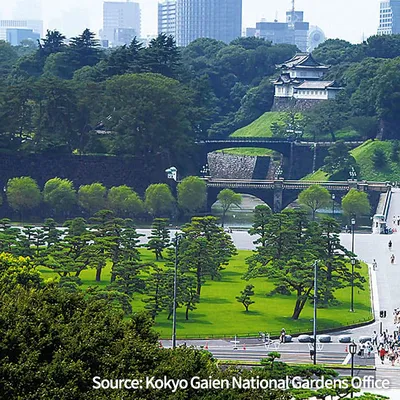
Kokyo Gaien National Gardens
Also known as the Imperial Palace Outer Gardens, this park is widely cherished for its quintessential Japanese landscapes. Spacious green lawns dotted with black pines blend harmoniously with the historical remnants of Edo Castle’s moats and gates.
Model course1
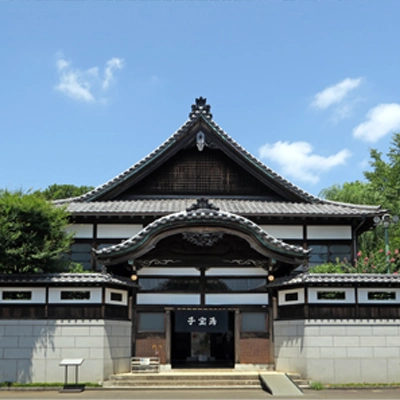
Edo-Tokyo Open Air Architectural Museum
This is an open-air museum where buildings of high cultural and historical value are relocated, restored, preserved, and exhibited. It features 30 structures, including farmhouses, inns, and public bathhouses that once stood in Tokyo, creating a townscape. Inside the buildings, visitors can see exhibits of household tools and goods from that period.
Model course2
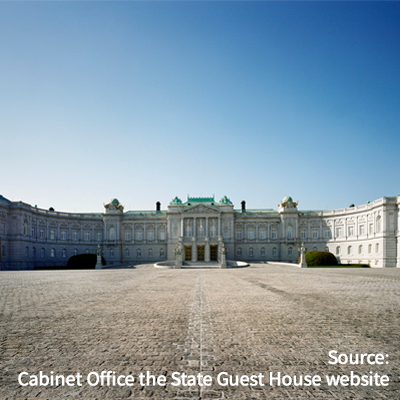
State Guest House Akasaka Palace
Built in 1909 as the Crown Prince’s Palace, this is Japan’s only Western-style palace in the Neo-Baroque style. After World War II, it became a state guest house, welcoming distinguished guests from abroad, including members of royal families and heads of state from around the globe. Visitors can immerse themselves in Japanese history and its diplomatic stage.
Model course11
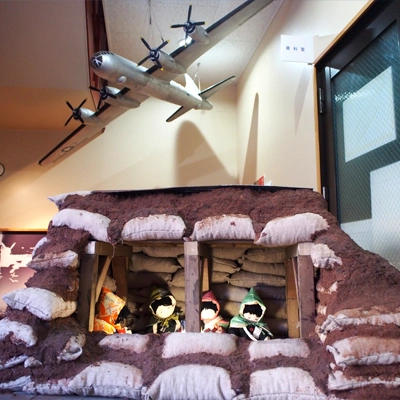
The Center of the Tokyo Raids and War Damage
This museum tells the reality of the air raids that Tokyo endured during World War II, including the Great Tokyo Air Raid of March 10, 1945. Exhibits feature photographs and artifacts from that era, as well as models of incendiary bombs, air-raid shelters, and light control systems. The museum also showcases records and testimonies from individuals who experienced the wartime devastation. Visitors have the opportunity to listen to firsthand accounts from those who lived through the war.
Official Website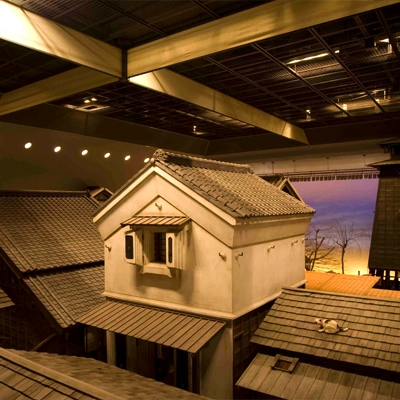
Koto City Fukagawa Edo Museum
This life-sized recreation of the streets of Edo-Fukagawa from the late Edo period (around 1840) uses sound and lighting to depict the changing scenes of a typical day. Visitors can enter traditional houses and interact with historical household tools, offering a hands-on experience of life from that time.
Model course9
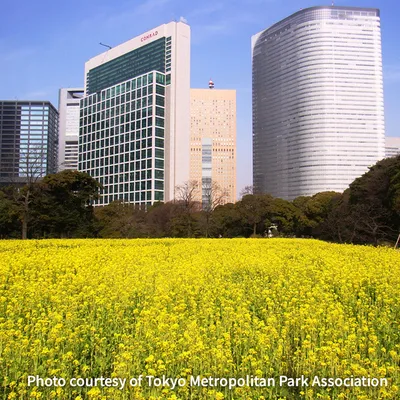
Hama-rikyu Gardens
This garden, which used to belong to the Tokugawa Shogun family, the most powerful family in the Edo period, has a Shioiri Pond and abundant nature. A shioiri pond is a tidal pond that draws in seawater, allowing the pond to change with the tide. It is now the only tidal pond in the Edo gardens of Tokyo.
Model course8
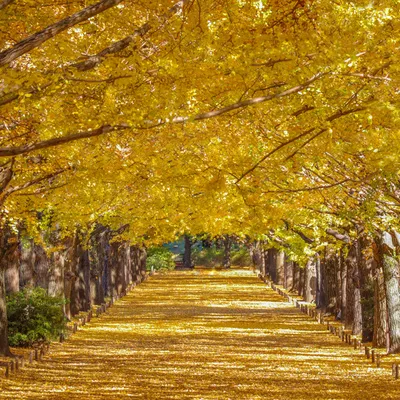
Showa Kinen Park
With a total area of 180 ha, this national park offers a place where visitors can enjoy seasonal nature and flowers throughout the year, including tulips in spring, and yellow gingko leaves in autumn. There are lots to see in this park, including Open Field, Japanese Garden, and Hanamidori Cultural Center, making it a place where you can spend whole day and never get bored.
Model course8
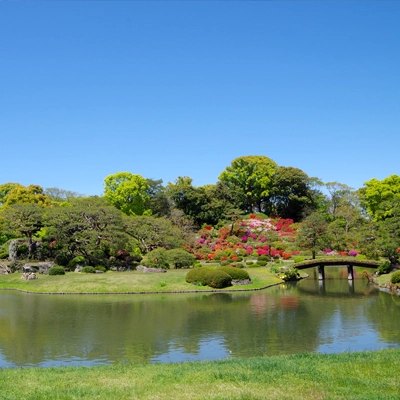
Rikugien Gardens
This garden, landscaped from the late 17th century to the early 18th century, represents in miniature scenes depicted in “waka” (classical Japanese poetry) and “kanshi” (Chinese poetry). It features a variety of picturesque elements, including a central pond filled with abundant water and artificially constructed “mountains,” offering visitors a rich visual experience.
Model course9
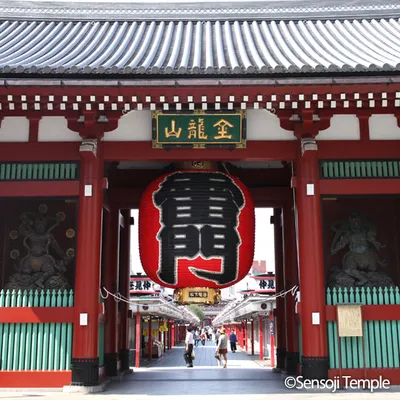
Sensoji Temple
Worshippers and tourists flock to Sensoji, Tokyo’s oldest temple. Nakamise is along the main approach to the temple, a 250-meter-long shop-filled street connecting the outer Kaminarimon gate to the second Hozomon gate.
Model course2 Model course4
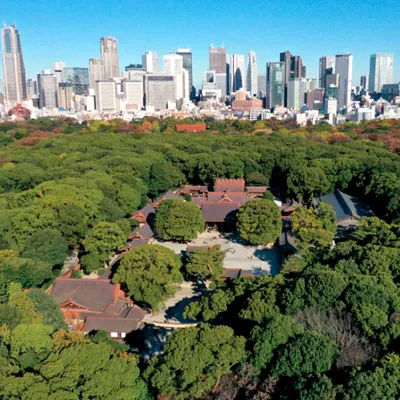
Meiji Jingu (Shinto Shrine)
The Meiji Jingu, built in 1920, honors the Emperor Meiji and his wife the Empress Shoken. The sacred forest surrounding the shrine is comprised of some 100,000 trees donated from around the nation. The stately atmosphere of this place is truly an oasis-in-the-city for the visitor.
Model course2
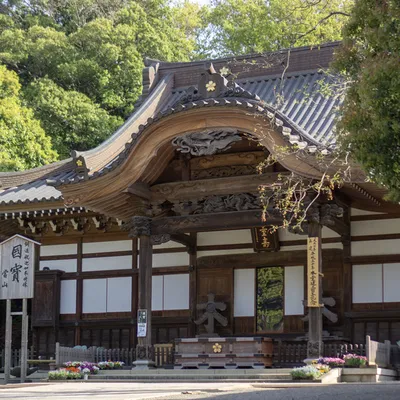
Jindaiji Temple
This old temple of the Tendai Sect of Buddhism was founded in 733. On the temple grounds, you can find historic cultural assets here and there, including the Sanmon Gate with a thatched roof, the gorgeous Hondo main hall, and the statue of a seated Shaka Buddha, which is the oldest National Treasure in eastern Japan. Jindaiji Daruma Ichi Fair, which is held in March every year, is considered one of the three biggest Daruma Ichi fairs in Japan.
Model course8
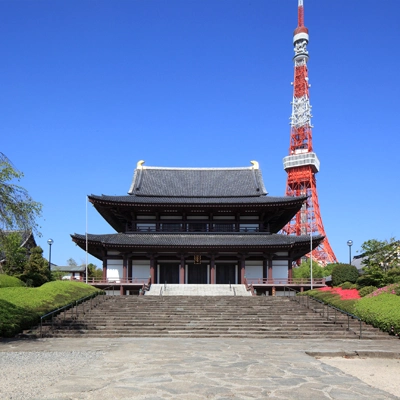
Zojoji Temple
This temple has a 600-year history and houses the graves of the Tokugawa shogunate from the Edo period (1603-1868). Known as the “Temple of Victory,” it enshrines the “Kurohonzon” Buddha statue, which survived the Warring States period (15th-16th century). Behind the “Daiden” main hall, where ceremonies and memorial services are held, stands a striking scene with Tokyo Tower and skyscrapers, symbolizing both old and new Tokyo.
Model course9
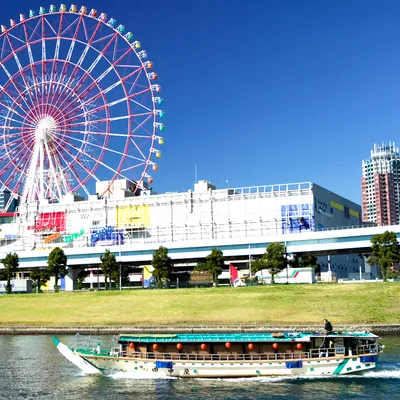
Yakata-bune (excursion boats)
The yakata-bune excursion boat has been a tradition since the time of the samurai. Take a boat ride down the Sumida River, mentioned in the Manyoshu— Japan’s oldest collection of poems—and enjoy not only the night view but the most delicious tempura as well.
Model course2
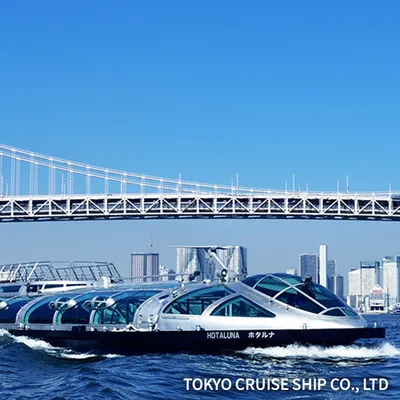
Water Bus
You can get on a water bus and visit several sightseeing areas along the Sumida River, including Asakusa and Ryogoku, while enjoying a waterfront view. Some routes have a water bus with a unique near-futuristic design.
Model course6
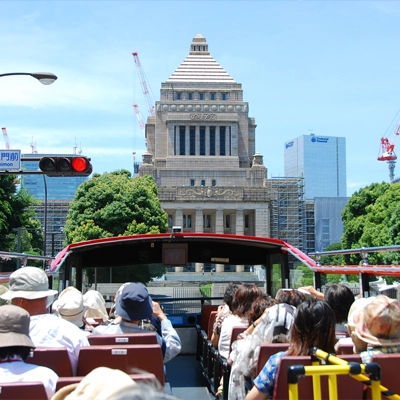
SKY BUS TOKYO
The open-top double-decker bus “SKY BUS” allows passengers to enjoy Tokyo from the open-air seats. Guided tours are available on routes that visit famous spots such as Tokyo Tower, Rainbow Bridge, Ginza, and the Imperial Palace.
Model course10
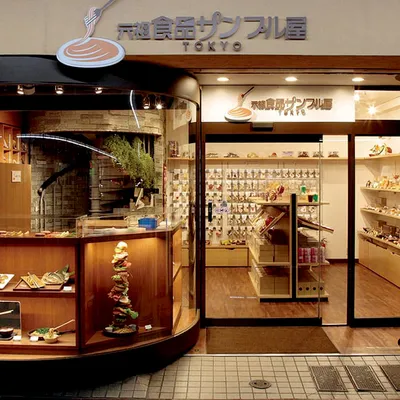
Ganso Shokuhin Sample-ya Kappabashi Store
Ganso Shokuhin Sample-ya makes realistic-looking replica food items. This store sells fun and unique products created through the art of food replicas. Visitors can also try their hand at making traditional faux food out of wax.
Official Website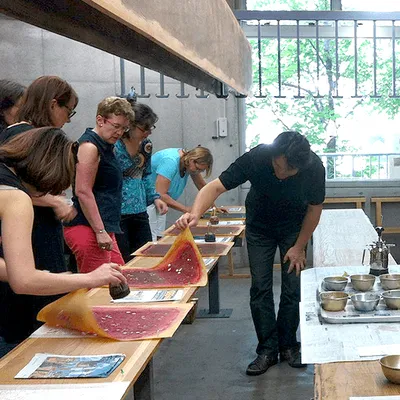
Some-no-sato OCHIAI (Futaba-en)
Some-no-sato OCHIAI is a dye studio that has been carrying on the tradition of the Edo katazome dyeing technique for over 100 years. The artisan skills on show here have been officially designated as a Traditional Craft. One-day lessons and classes are available.
Model course6
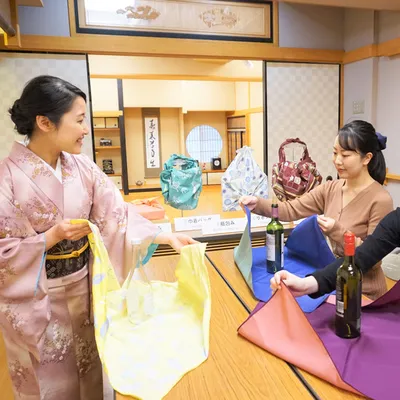
JIDAIYA
JIDAIYA offers various cultural experience programs, such as rickshaw and kimono experience, in Asakusa. In the “SDGs with Furoshiki” program, you can learn how to use furoshiki (Japan’s traditional wrapping cloth) for wrapping and other purposes, which allows you to practice the SDGs without any hassles while being exposed to traditional Japanese culture. You can also learn about the history of rickshaw, the ultimate ecological vehicle in alignment with the SDGs, and get a chance to actually drive a rickshaw as an occupational experience.
Model course6
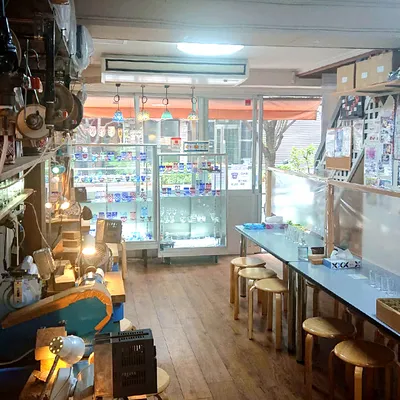
Kiriko Cut Glass Studio Ojima
Traditional Edo kiriko cut glass is produced here at this studio. Workshops are held for the public. In particular the studio has appropriate tools for elementary school and junior high school students. A pen is used to create a draft on a small transparent glass, which is then placed on a disk for etching. The finished piece is put in a box for the visitor to take home with them. This is a very safe endeavor, so it’s well worth giving it a try!
Model course2 Model course11
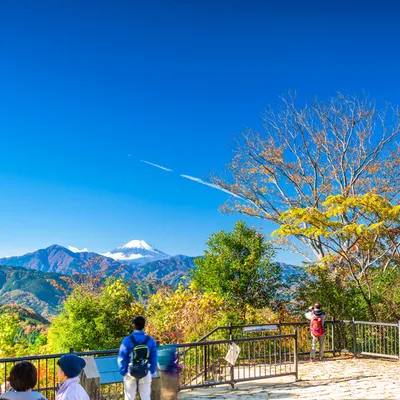
Mt. Takao
With an altitude of 599 meters, this mountain offers various hiking routes with different distances and difficulties, as well as cable cars and lifts, using which you can get to the summit on foot in about 40 minutes. There is also Takao-san Yakuoin Temple with a history of over 1,000 years and Trick Art Museum. It is one of the most popular destinations for excursions of schools in Tokyo.
Model course8
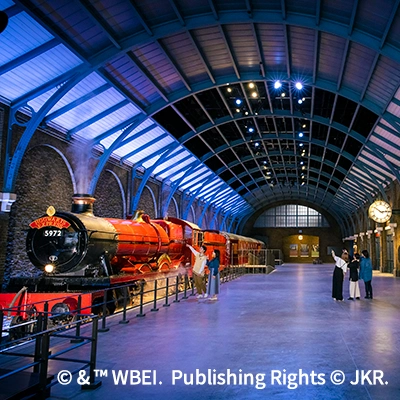
Warner Bros. Studio Tour Tokyo - The Making of Harry Potter
An indoor attraction where you can explore behind the scenes of the Harry Potter and Fantastic Beasts films. See authentic sets, costumes, and props up close while learning about the filmmaking process and special effects. A creative and inspiring experience awaits.
Official Website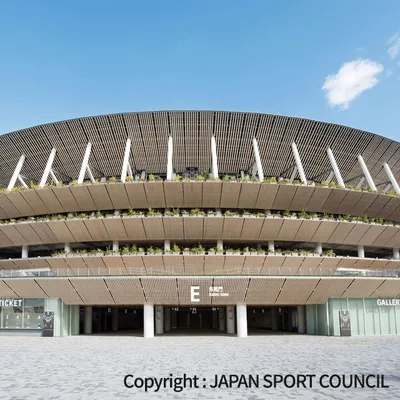
Japan National Stadium
The stadium tour is a chance for visitors to experience the amazing legacy of the Olympic and Paralympic Games Tokyo 2020. Check details from the Stadium tour Website.
Model course4
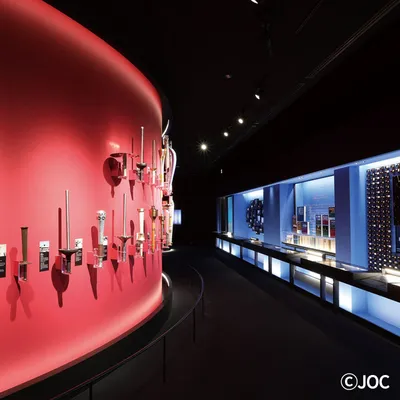
Japan Olympic Museum
This museum, established by the JOC, is a center of information for Japan’s Olympic movement. It houses various exhibits and visuals, showcasing the value of the Olympics.
Model course4
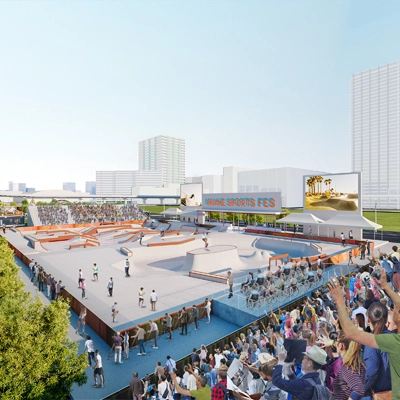
Ariake Urban Sports Park
A state-of-the-art sports facility built for the Tokyo 2020 Olympic Games and inheriting the legacy of urban sports adopted for Olympic competitions. It includes exercise facilities such as a running stadium and rope athletics, as well as dining facilities like cafes and food courts.
Model course10
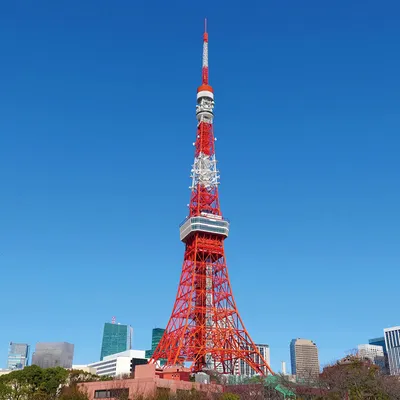
Tokyo Tower
Tokyo Tower is a broadcasting tower, built in 1958. It offers spectacular views of Tokyo, in all the city’s three-dimensionality, from its two observation decks at 150 meters and 250 meters.
Model course1
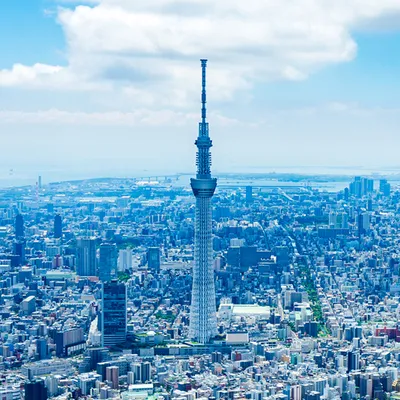
TOKYO SKYTREE®
TOKYO SKYTREE® is the world’s tallest stand-alone communication tower. From the two observation decks at 350 meters and 450 meters, visitors can take in a spectacular view of the Tokyo night sky, and experience the illusion of walking through the air. The nearby Soramachi® shopping area (300 shops) and the Aquarium are popular spots.
Model course2 Model course4
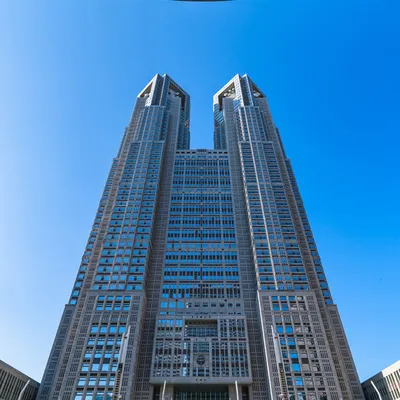
Tokyo Metropolitan Government Building Observatories
Tokyo Metropolitan Government Buildings are one of the most prominent landmarks in Tokyo. From the observatory on the 45th floor at a height of 202 meters, you can get a panoramic view of Tokyo, including TOKYO SKYTREE🄬, along with Mt. Fuji if it is clear enough. Tokyo Sky Guide is a special viewing guide app for the observatory, offering information on a total of 32 spots you can see from the observatory in 15 languages.
Model course8
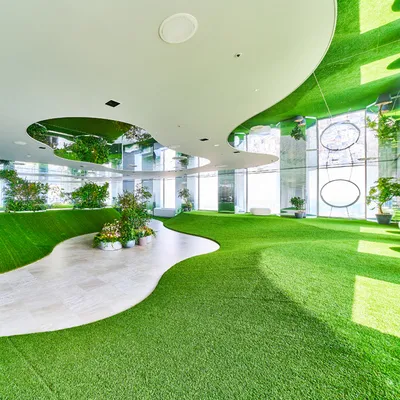
SUNSHINE60 OBSERVATORY TENBOU-PARK
Located on the 60th floor of Ikebukuro’s Sunshine 60 building, this observatory re-opened in 2023 after its major renovation. You can get a panoramic view of the city from 251 meters above sea level. It features a space with lush greenery reminiscent of a park with seasonal plants and flowers on the floor covered with artificial turf. You can even get a chance to see Mt. Fuji in the distance, depending on the weather.
Model course7
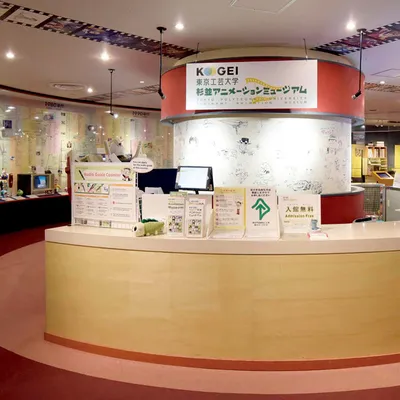
Suginami Animation Museum, Tokyo Polytechnic University
The Suginami Animation Museum is the first facility where visitors can enjoy, learn, experience and understand Japanese animation in a structured way. With hands-on sections to experience special effects of animation and voice recording, as well as special exhibitions that incorporate information about animation etc., there are lots of things for visitors to do that will help them to learn about animation in an enjoyable way.
Model course11
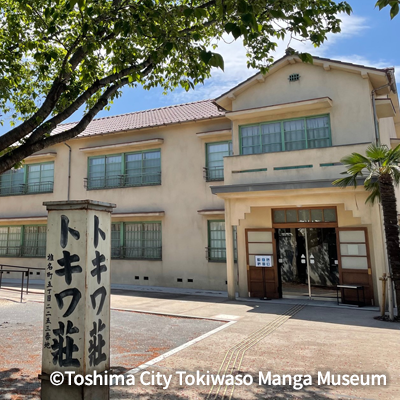
Toshima City Tokiwaso Manga Museum
This museum recreates “Tokiwaso,” the apartment where TEZUKA Osamu, renowned for manga works such as “Astro Boy,” and many other masters of the Japanese manga world spent their younger days. It showcases recreated rooms where these artists lived, offering insights into their daily lives and the creative processes behind manga production.
Model course11
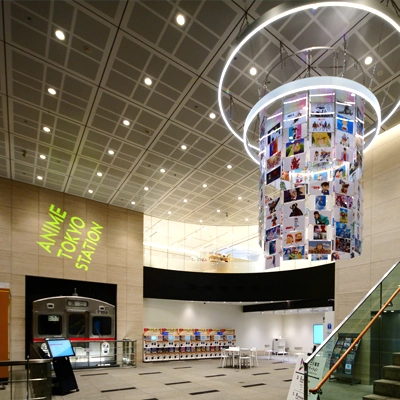
Anime Tokyo Station
A hub dedicated to showcasing the appeal of anime. It houses an archive with over 50,000 anime-related materials and a permanent exhibition where you can learn about the anime production process. In addition, special exhibitions let you experience popular anime works firsthand, alongside events and workshops.
Model course11
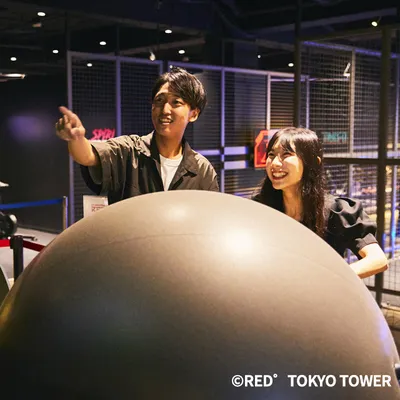
RED° TOKYO TOWER
One of Japan’s largest amusement parks, inside Tokyo Tower, offering cutting-edge AR/VR attractions. Visitors can enjoy parasports such as boccia, as well as activities like HADO, bouldering, and trampolining—all enhanced by the latest technology. Learn about advanced technology while having fun at Tokyo’s iconic landmark, Tokyo Tower.
Model course6

Kawasaki Robostage
This is a space provided by Kawasaki Heavy Industries, based on the concept of realizing human-robot coexistence and collaboration, where visitors can learn about robots. Visitors can see, touch, and experience a variety of robots, including industrial robots and social robots.
Model course6
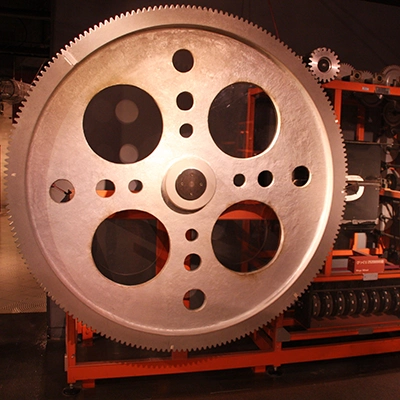
Science Museum
A hands-on facility where you can learn about science and technology in everyday life. Around 20 themed exhibition rooms cover topics such as cars, electricity, construction, medicine, and metals. The interactive exhibits—where you can look, touch, and operate—offer plenty of opportunities for discovery and ideas to think about the future.
Official Website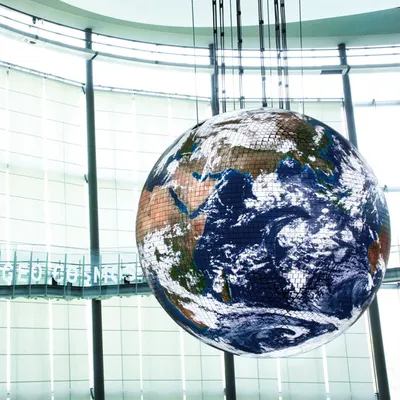
National Museum of Emerging Science and Innovation (Miraikan)
This national science museum offers visitors the opportunity to experience cutting-edge scientific technologies. In addition to permanent exhibits themed around robots, artificial intelligence, life sciences, Earth environment, and space, the museum features various special exhibitions and events that allow visitors to enjoy the scientific technologies shaping our future.
Model course3
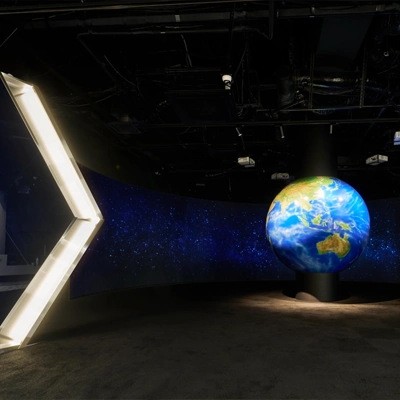
Orbitarium
Opened in 2023, this facility allows visitors to learn about the issues of space debris and space sustainability. Visitors can explore the relationship between the earth and space, orbits, and artificial satellites. There is also an area where visitors can observe the development process in a clean room where satellite manufacturing and parts testing are conducted.
Model course10
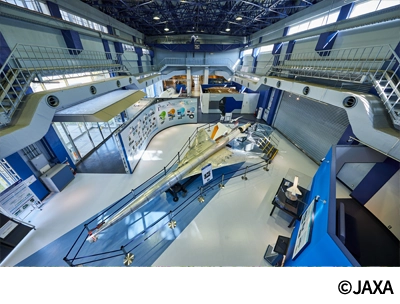
JAXA Chofu Aerospace Center
Engaged in advanced research and technological development in the fields of aviation and aerospace, this facility showcases experimental aircraft and wind tunnels that artificially create airflow.
It provides a space where research activities in aviation and aerospace are presented in an easy-to-understand way. Visitors can also experience simulated piloting of future spaceplanes.
Model course10
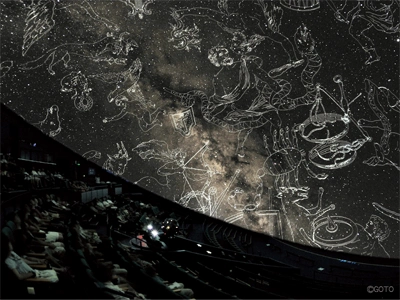
Tamarokuto Science Center
A hands-on museum where visitors can observe the starry sky in one of the world’s largest planetarium domes, capable of projecting 140 million stars, and enjoy experiments and crafts.
Official Website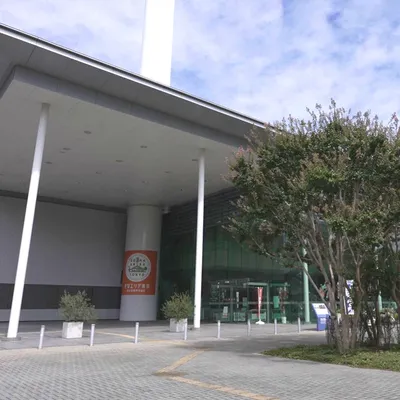
Tokyo Rinkai Disaster Prevention Park Sona Area Tokyo
Armed with tablet PCs and placed in a simulated earthquake scenario centered on Tokyo, visitors learn how to survive the first 72 hours after a major earthquake. The facility also shows animated videos and holds workshops and events focusing on disaster preparedness.
Model course4
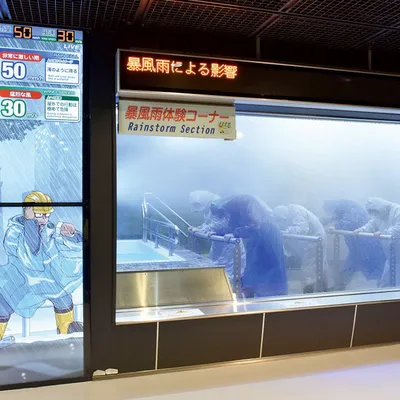
Honjo Life Safety Learning Center, Tokyo Fire Department (Honjo Bosaikan)
At this disaster prevention facility, visitors gain knowledge and know-how in a fun way. Take unique tours of simulations including earthquakes, fires, and wind/rain, led by instructions. There are also areas where visitors can tour on their own.
Official Website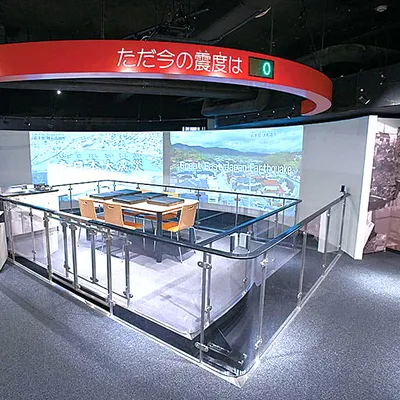
Ikebukuro Life Safety Learning Center, Tokyo Fire Department (Ikebukuro Bosaikan)
A tour of this facility gives visitors experience in dealing with disaster situations. Visitors go through an hour and 40 minutes of disaster preparedness training with an instructor. Every Friday evening, a special “Night Tour,” assuming a scenario with a fire at night, is held.
Model course7
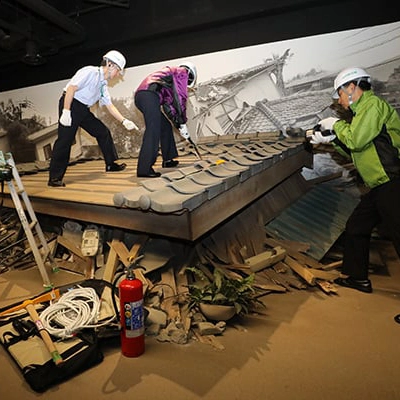
Tachikawa Life Safety Learning Center, Tokyo Fire Department (Tachikawa Bosaikan)
A disaster-prevention learning facility where you can gain practical skills useful in natural disasters. Through hands-on experiences such as earthquake simulations, fire extinguishing, and first aid, you can learn important knowledge and actions to protect yourself—while having fun. In the free-exploration area, quizzes and exhibits let you learn about disaster prevention in a game-like way.
Official Website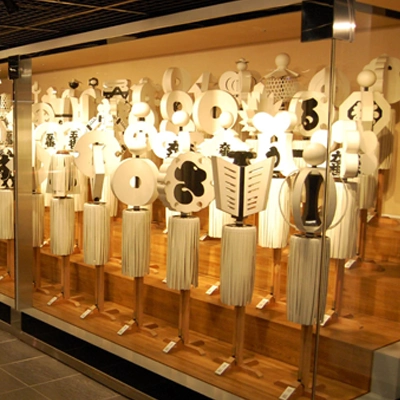
Fire Museum
Learn about fire and disaster prevention through the history of firefighting at this museum. The wide range of exhibits include exquisite woodblock prints and historical documents related to the early firefighting practices, firefighting tools, as well as, water pumps, protective gear and other equipment from the past centuries to the present.
Official Website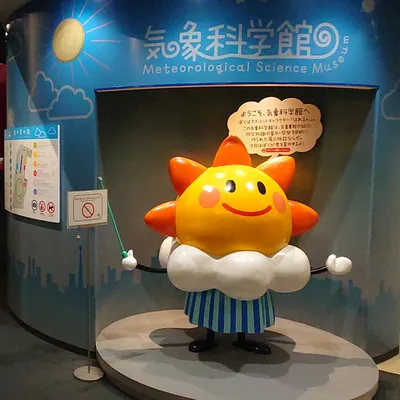
Meteorological Science Museum
This museum displays observation instruments for weather and earthquakes, systems where you can learn about the information on disaster prevention, and theaters where you learn about/feel the natural environment of Japan. Some of the exhibits and activities are available with English subtitles. There is a full-time commentator who is a certified weather forecaster, so you can ask any questions about weather and earthquakes.
Model course7
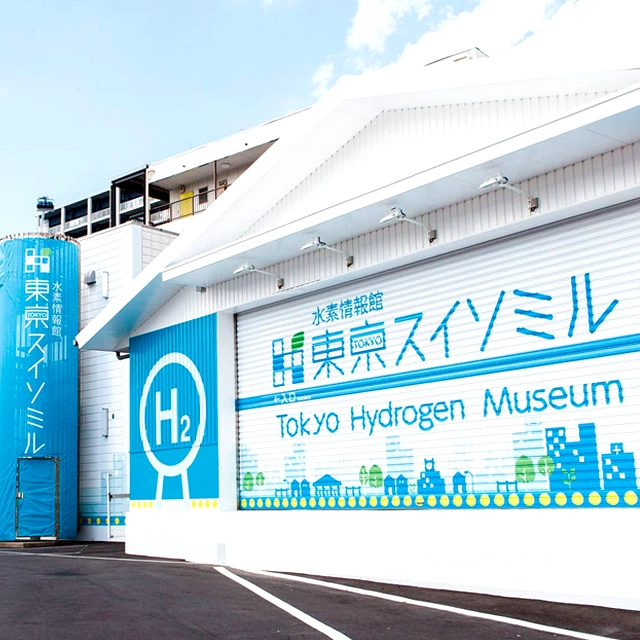
The Hydrogen Information Center “Tokyo Hydrogen Museum”
Here, visitors learn about the future of hydrogen—an invisible substance—as well as how hydrogen will be utilized in our society—by both touch and direct experience. At this unique comprehensive learning center, everyone gets the opportunity to understand hydrogen.
Model course3
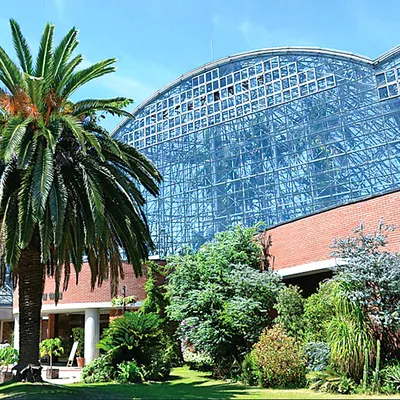
Tokyo Yumenoshima Tropical Greenhouse Dome
The wide range of exhibits include exquisite woodblock prints and historical documents related to the early firefighting practices, firefighting tools, as well as water pumps, protective gear and other equipment from the past centuries to the present. The adjacent Shin-koto Incineration Plant provides heat for the greenhouse.
Model course3
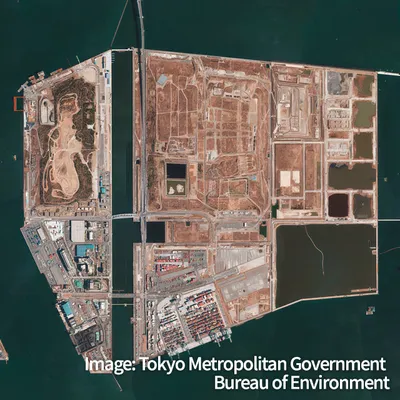
Tokyo Metropolitan Government Waste Landfill Site
This is where Tokyo’s waste is sent for final disposal. It’s an ideal place to consider the issue of waste disposal in large cities. Following a presentation that gives an overview of landfill facilities, it is possible for visitors who have their own vehicular transport to visit a landfill site, a large waste-crushing process facility, and a non-flammable waste-processing facility.
Model course3

JICA Global Plaza
The Plaza offers programs featuring interactive exhibits that teach visitors about the current living environment in developing countries, global issues, and international collaboration; as well as workshops and lectures by people who have worked on projects in developing countries.
Model course4
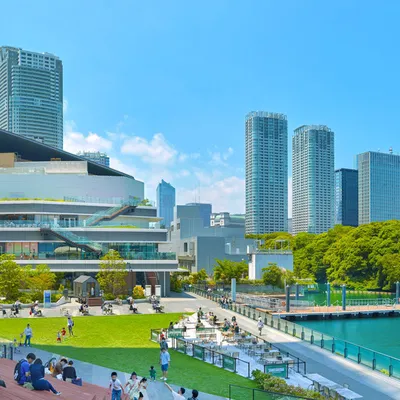
WATERS takeshiba
Located in the waterfront area nearby Hama-rikyu Gardens, this complex facility has various tenants, including Shiki Theatre, a special theatre for Shiki Theatre Company, a hotel, and a commercial facility, as well as a dock for the Water Bus. There is an artificial tidal flat, where efforts are currently being made for environmental regeneration of Tokyo Bay, which used to be called “Edomae,” making it a great place to learn about the environment.
Model course6
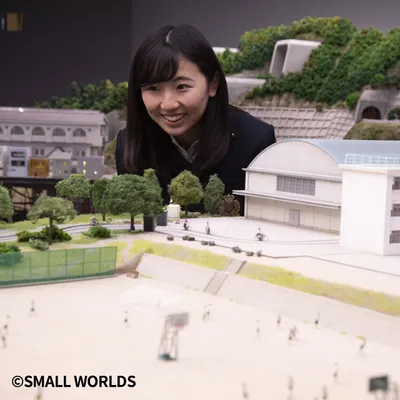
SMALL WORLDS
One of the biggest indoor miniature parks in Asia. There are various kinds of inquiry learning programs under the themes of SDGs, career education, STEAM education, international understanding, and cutting-edge technologies, offering a place for voluntary learning through experiences.
Model course6
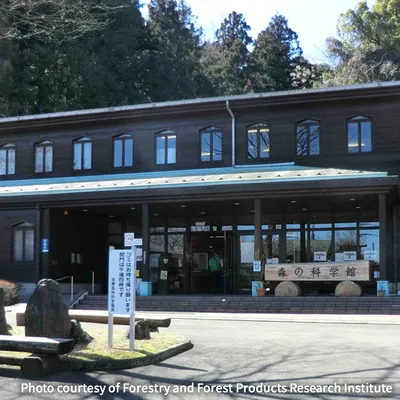
Tama Forest Science Garden
Along with various types of samples including lumber samples and cherry trees displayed at the exhibition hall “Mori no Kagakukan,” you can learn about forests and the lumber industry. A guided tour (Tuesday to Friday at 10:00) is offered in the garden, which teaches you how to distinguish different kinds of trees and what to see during each season.
Model course8
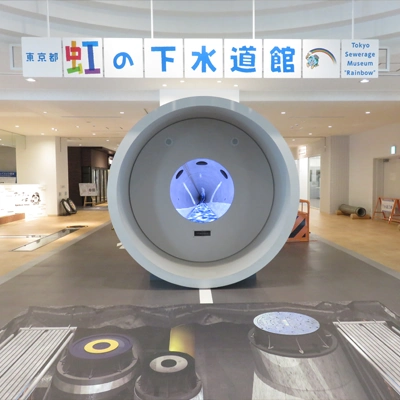
Tokyo Sewerage Museum “Rainbow”
This hands-on facility allows visitors to learn about the role of Tokyo’s sewage system and the importance of water environments. Using full-scale sewage pipes and pumps, visitors can experience work related to sewerage, such as cleaning and repairing equipment and operating machinery. Guided tours to observe the sewage treatment process are available on Saturdays, Sundays, and holidays; for details on tour periods, please refer to the official website.
Model course3
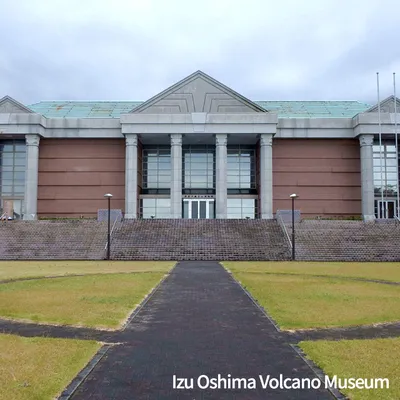
Izuoshima Museum – Geonos –
Opened as the main facility of the Izu Oshima Geopark, this museum introduces the island’s origins, geology, terrain, rich ecosystems, and a way of life shaped by living in harmony with nature. In the exciting Projection VR Theater, you can experience the dynamic landscapes created by volcanic eruptions. It’s a museum full of discoveries where you can learn while enjoying the charm of Oshima.
Model course5
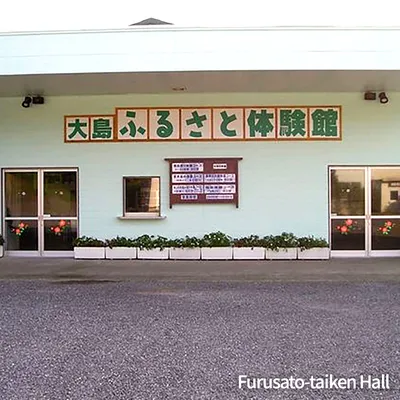
Furusato-taiken Hall
This facility is a unique place where visitors can relax in a pastoral setting, primarily experiencing the natural environment and culture of Oshima. Specific workshops include squeezing camellia oil, vegetable dyeing, and local performing arts (groups only).
Official Website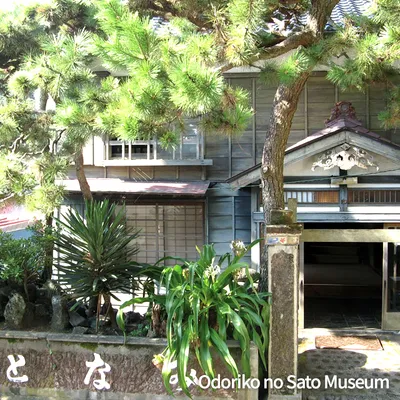
Odoriko no Sato Museum
The Odoriko no Sato Museum has two sections: the Former Minatoya Ryokan and the Former Jinnomaru Residence, both of which were built during the Meiji Period. Go through them slowly and deliberately as you take in the atmosphere of times past.
Official Website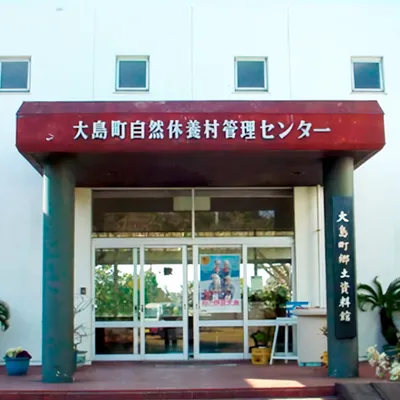
Oshima Native History and Traditional Crafts Museum
At this local museum, visitors learn about the formation, history, and people of Oshima. The museum houses some 600 pieces of folk materials including descriptions of the volcanoes of Oshima, “Oshima and the Sea,” “Pottery and Stone Tools of the Jomon Period,” “Women’s Customs,” and “Festivals of Oshima.”
Official Website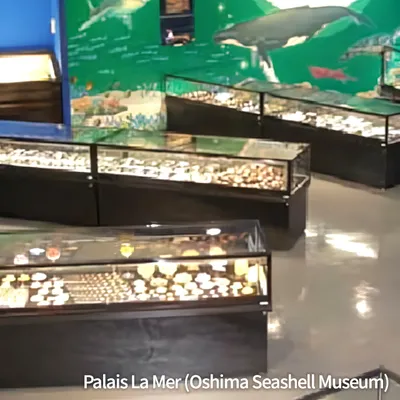
Palais La Mer (Oshima Seashell Museum)
This is an unusual museum in Japan. It houses not only shells from Izu and the Ogasawara Islands but also 50,000 beautiful shells in 4,000 different varieties from Japan and countries around the world, of which 10,000 shells from 2,400 species are on display. It also showcases many shell fossils, folk crafts incorporating shells, etc.
Official Website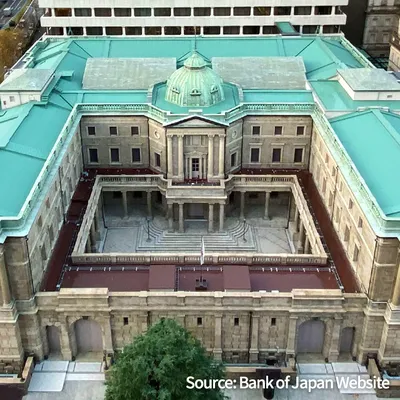
Bank of Japan Head Office
The Bank of Japan Head Office, erected in 1896, was the first modern national architecture (National Important Cultural Property) to be built by a Japanese architect. As part of a one-hour guided tour, visitors can also view the underground vault, which was used until 2004.
Model course7
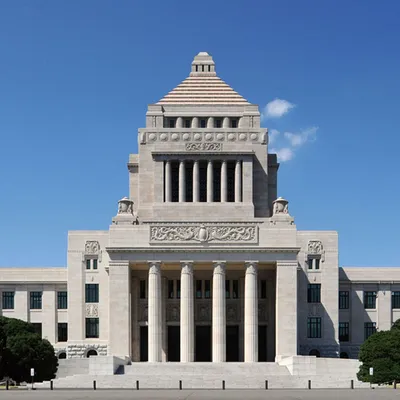
National Diet Building
The Japanese Diet is held in this building. Here, Japan’s only legislative body makes laws and determines fiscal budgets. Note how the building is symmetrical on both sides. On the left facing the front is the House of Representatives, while the right side is occupied by the House of Councilors (formerly the House of Lords).
Model course1
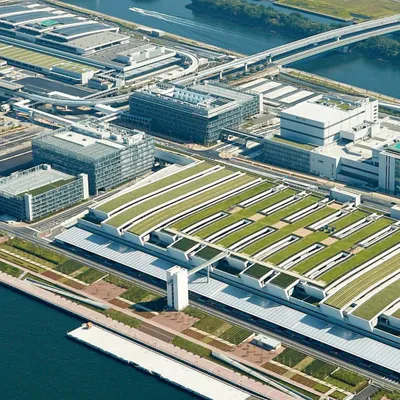
Tokyo Metropolitan Wholesale Market Toyosu Market
Toyosu Market comprises three blocks: block 7 with the seafood wholesaling building, block 6 with the seafood auctions building, and block 5 with the fruit and vegetable wholesaling building. The new market has been designed to ensure food safety, while implementing efficient logistics and first-rate environmental measures.
Model course1
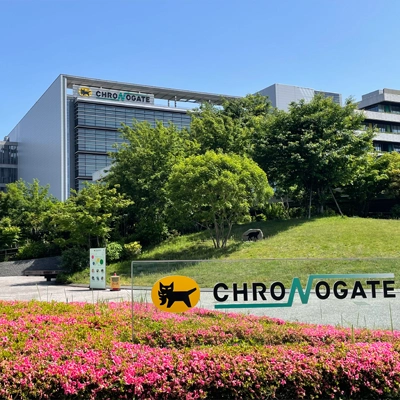
Haneda Chronogate
Haneda Chronogate is one of the largest logistics terminals in Yamato Group, located close to Haneda Airport. This terminal integrates a speedy transportation network of land, sea, and air and value-added services.
Official Website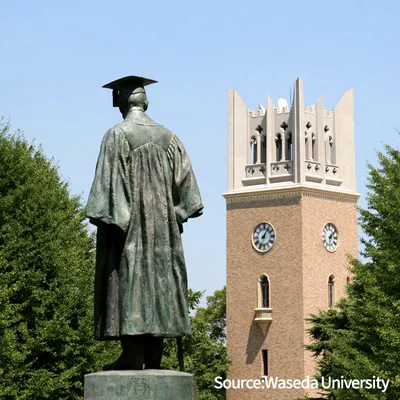
Waseda University
Waseda University is one of the leading educational institutions in Japan, renowned for the high quality of its teaching and research. Campus tours are available in which Waseda student guides explain historical episodes and student life; tour participants also have the chance to visit sites that are usually not open to the public, such as the Okuma Auditorium clock tower, etc.
Model course1
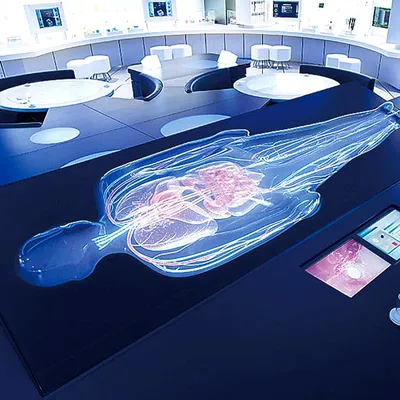
Daiichi Sankyo Kusuri Museum
Here you can have fun learning about medicine through CG images and interactive games. As well as studying how medicines work and how they are developed, visitors can discover the history of Nihombashi, an area that has been synonymous with the medicine business since the Edo period.
Official Website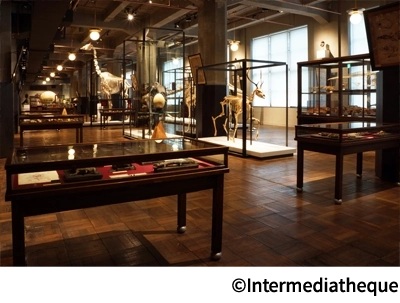
INTERMEDIATHEQUE
Located in the “KITTE,” a commercial complex adjacent to Tokyo Station, which partially preserves and redevelops the old Tokyo Central Post Office building, this museum exhibits academic samples from the University of Tokyo. The museum exhibits samples and materials in a variety of fields, including archaeology, geology, and contemporary art. The space is characterized by its rich design, which stimulates intellectual curiosity.
Model course10
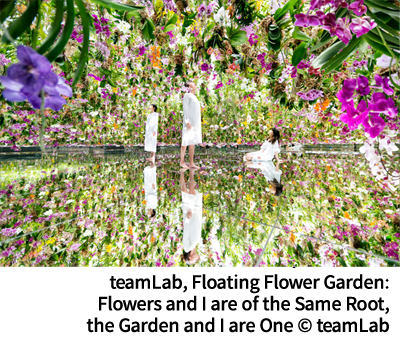
teamLab Planets TOKYO
From the art collective “teamLab” comes an immersive digital art museum developed with cutting-edge visual technology. Visitors can feel art with their whole body as they walk barefoot through a wealth of wondrous works that weave water and flowers into a fantastical space, renowned throughout Japan and the world.
Model course10
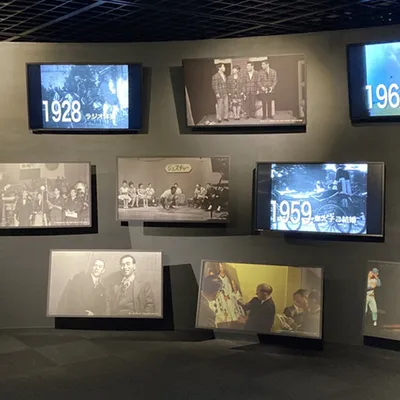
NHK Museum of Broadcasting
Opened in 1956 as the first broadcasting museum in the world, this museum has been serving as a place to learn about the history of broadcasting for its advances and developments over about 100 years. It features experiences as an announcer or weather forecaster in a studio as well as exhibitions under different themes, including dramas, music programs, and children’s programs.
Model course7
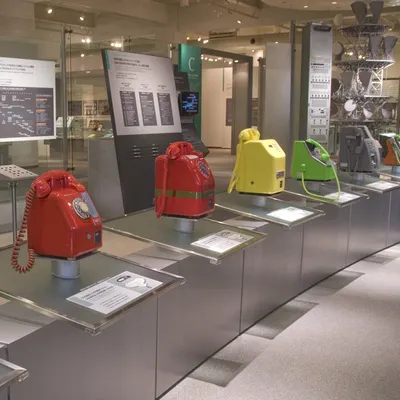
NTT History Center of Technologies
Owned by the NTT group, one of Japan’s biggest telecommunications company groups, this museum exhibits a huge number of historical assets of the group. With the display of rare old telephone machines and the history of portable phones across four floors, you can learn how the telecommunication technologies have advanced.
Model course7
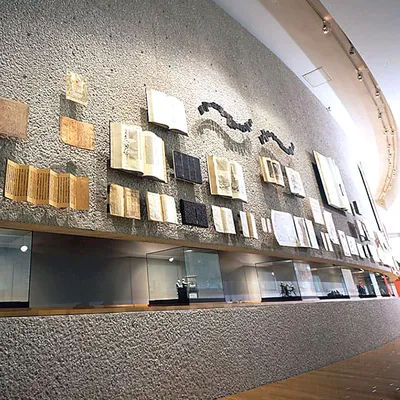
Printing Museum, Tokyo
This museum showcases the history of printing—from its origins through the present day—all over the world. It also illustrates the value of print media as a communications media, the value of print media, and all of its possibilities.
Official Website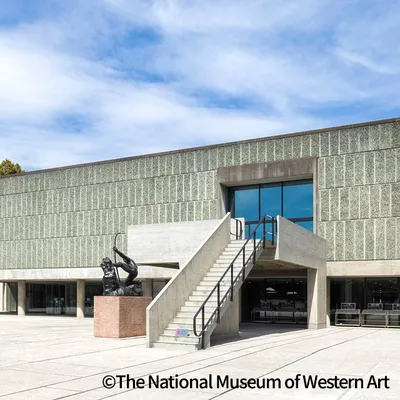
The National Museum of Western Art
This is Japan’s only national museum showcasing the art of the Western world. The Main Building, designed by architect Le Corbusier, was registered as a World Cultural Heritage Site in 2016. Visitors can enjoy the history and beauty of Western art.
Model course11
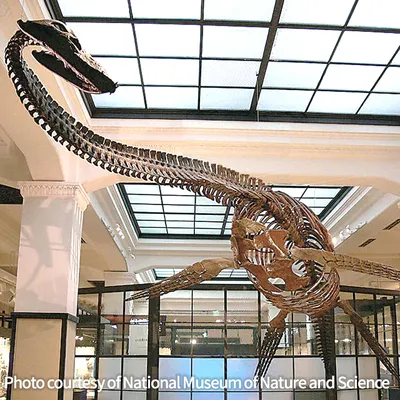
National Museum of Nature and Science
This is the nation’s only comprehensive science museum. It features two permanent exhibits: the Japan Gallery and the Global Gallery. The different floors offer different themes, including dinosaur fossils, stuffed animal specimens, scientific technology development, and more.
Model course1
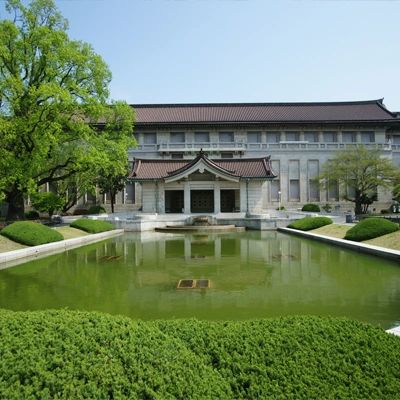
Tokyo National Museum
Founded in 1872, this is the oldest museum in Japan, with six exhibition halls displaying antiques and archaeological artifacts from Japan and other Asian countries. The museum boasts an extensive collection of approximately 120,000 items, including around 90 National Treasures and 650 Important Cultural Properties. Nearly every week, one of the exhibition rooms undergoes a display change.
Model course9
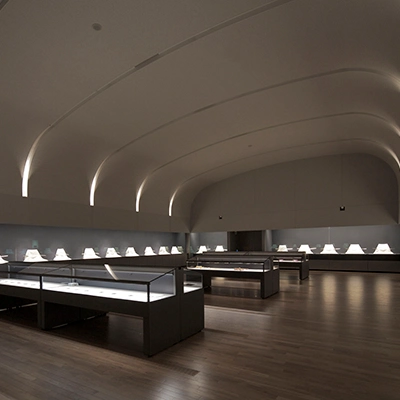
The Japanese Sword Museum
This museum preserves and displays Japanese swords from various periods and schools. It includes swords designated as National Treasures and Important Cultural Properties, allowing visitors to appreciate them not only as weapons but also as works of art. The museum also has a collection of equipment and armor related to swords.
Model course9
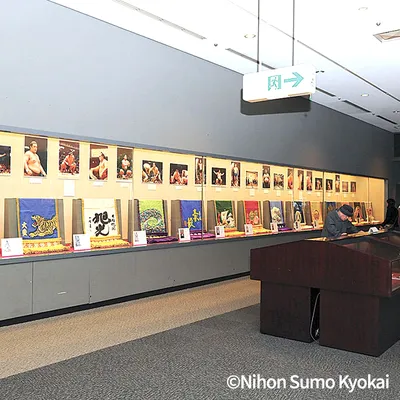
Sumo Museum
This museum collects, preserves, and exhibits (3 times/year) materials related to sumo, from woodblock prints and banzuke sumo wrestler rankings to ceremonial aprons.
Model course1
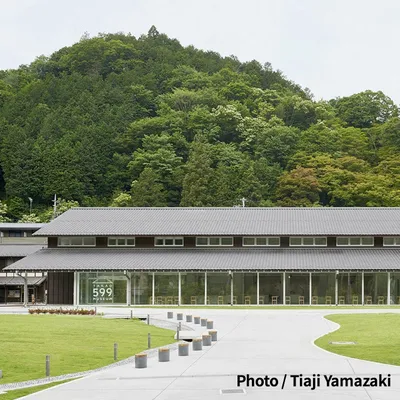
Takao 599 Museum
This is a museum where you can learn about the animals, plants, and the history of Mt. Takao as well as manners for mountain climbing. Various special exhibitions and experience-based events are offered on an irregular basis. The huge lawn space has a place where kids can play with water, offering a place of rest and relaxation for visitors.
Model course8




